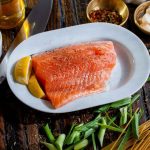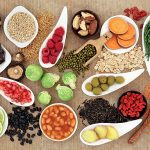In a world filled with conflicting dietary advice, understanding how to eat for optimal health can often feel like decoding a complex puzzle. However, by turning to the reliable resource of a food guide, we can navigate through the confusion and gain clarity on what it takes to achieve optimal health. In this article, we uncover the mysteries behind the food guide, providing invaluable insights into its significance and how it can be decoded for a healthier and more fulfilling life.
The Importance of a Food Guide: A food guide serves as a trusted roadmap that outlines evidence-based recommendations for healthy eating habits. It empowers individuals to make informed choices about the types and quantities of foods needed to maintain overall health and prevent chronic diseases. By following the guidelines provided in a food guide, we can work towards achieving optimal health and well-being.
Decoding the Essential Components: Unraveling the secrets of the food guide involves understanding its essential components. These components typically include:
- Nutrient-rich fruits and vegetables: Filling our plates with an array of colorful fruits and vegetables provides a multitude of vitamins, minerals, and beneficial plant compounds. Phytonutrients found in these foods help support our immune system and protect against chronic diseases.
- Whole grains for sustained energy: Opting for whole grain versions of bread, rice, pasta, and cereals provides us with essential nutrients and fiber that promote healthy digestion and sustained energy levels.
- Lean protein sources: Including lean sources of protein such as poultry, fish, legumes, tofu, and dairy products helps build and repair body tissues while providing essential amino acids.
- Healthy fats in moderation: Incorporating healthy fats from sources like avocados, nuts, seeds, and olive oil provides essential fatty acids that support brain function, heart health, and overall well-being. Moderation is key to maintaining a balanced diet.
Understanding Portion Sizes: Decoding the food guide also involves understanding portion sizes. While individual requirements vary, the food guide offers guidelines on appropriate serving sizes for each food group. This knowledge enables us to consume a balanced and varied diet, ensuring we meet our nutritional needs without overindulging.
Translating Theory into Practice: To effectively decode and implement the recommendations of the food guide in our daily lives, consider the following practices:
- Prioritize meal planning and preparation: Planning meals in advance allows for mindful choices and ensures access to nutritious options throughout the day. Preparing meals at home permits better control over ingredients, portion sizes, and cooking methods.
- Mindful eating: Pay attention to satiety cues and eat slowly, relishing the flavors and textures of each bite. Being present during meals helps prevent overeating and promotes satisfaction.
- Read nutrition labels: Develop the habit of reading and understanding nutrition labels to make informed choices when purchasing packaged foods. Assessing ingredients, nutrient content, and recommended serving sizes aids in making healthier selections.
- Seek expert guidance: Consider consulting a registered dietitian or nutritionist to receive personalized advice tailored to your specific dietary needs and goals. They can help provide clarity and address any confusion regarding your nutritional journey.
Decoding the food guide is an essential step in achieving optimal health and well-being. By unraveling its components, understanding portion sizes, and translating this knowledge into practice, we can embark on a path of improved dietary habits and overall vitality. Remember, the food guide is not meant to be followed rigidly, but rather serves as a valuable resource to guide us towards making informed decisions that support our long-term health goals. From confusion to clarity, decoding the food guide empowers us to nourish our bodies and achieve a healthier, more fulfilling life.















Add Comment